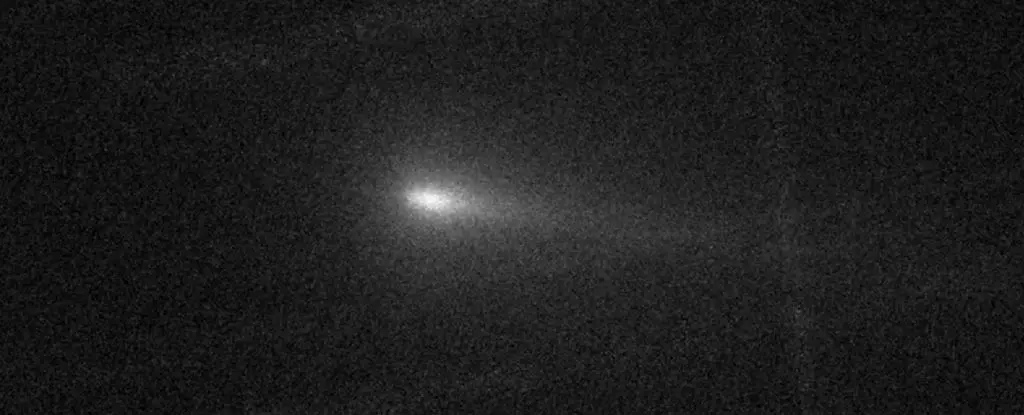The celestial wonders of our solar system often elicit awe and wonder, and the recent discovery of comet C/2024 S1 was no exception. Initially anticipated to light up the night sky around Halloween, this Kreutz sungrazer comet, however, appears to be undergoing a rather tragic disintegration. Since its discovery on September 27, astronomers have watched as the comet brightened only to subsequently dim, leaving behind tantalizing traces of dust and gas. As we delve into the phenomena surrounding C/2024 S1, we encounter not only disappointment but also insights into the fascinating lives of comets.
C/2024 S1 was once thought to potentially outshine even Venus, bright enough for daytime visibility as it approached perihelion—a point where it comes closest to the Sun. Astrobiological lore holds similar tales of comets—their brilliance emerging from their icy core, only to fade as they spiral into our Sun’s fierce embrace. However, the disintegration of C/2024 S1 seems to have entered the narrative in a twist that was not entirely unforeseen. The very nature of comets, particularly those of the Kreutz group, predisposes them to fragmentation as they interact with solar heat.
Observed from October onwards, images capturing the comet reveal a dramatic arc of activity, including significant outbursts that engender brightness spikes. These outbursts, which can be likened to a celestial “fizz,” indicate a meteoric release of dust and gas from the nucleus, suggesting instability within. For a comet, this fluctuation could signal the onset of disintegration—a phenomenon stemming from the extreme conditions it encounters as it approaches the Sun.
Comets are fascinating entities primarily composed of ice and dust, originating from the chilling reaches of our Solar System. As they approach the Sun, the intense heat causes the sublimation of ice, resulting in the expulsion of gas and dust. The rapid release of material can alter the spin dynamics of the comet, potentially leading to fragmentation. This delicate dance of forces was vividly illustrated by comet C/2019 Y4 in 2020, which met a similar fate as it drew nearer to the Sun, disintegrating under the watchful gaze of the Hubble Space Telescope.
The ongoing analysis of C/2024 S1’s behavior—specifically, the vanishing nucleus—has drawn significant attention from both professional and amateur astronomers alike. Reports suggest that recent images captured by a Czech amateur astronomer, Martin Mašek, indicate that the comet’s core has become indiscernible, raising questions about whether a central fragment can survive the imminent solar encounter.
Interestingly, C/2024 S1 is believed to be a remnant of a larger, historical comet—the Great Comet of 1106 CE. This cosmic parent shattered into a myriad of smaller fragments as it intertwined with the Sun’s gravitational pull, with many of these progenies still visible today. Notably, Comet Ikeya-Seki, which graced our skies in 1965, was one such offspring, shining brilliantly almost as brightly as the full moon. The Kreutz sungrazer family’s legacy continues to influence contemporary cometary observations, reminding us how these fragments of the past continue to play a role in present celestial events.
As C/2024 S1 seems to drift toward its inevitable perihelion on October 28, 2024, we are left pondering the potential outcomes of its tumultuous journey. It’s clear that fragmentation poses a significant risk, which would diminish the likelihood of witnessing an extraordinary display of light. However, the remnants of the comet’s nucleus might still offer a visual treat. Even should the main body disintegrate, we may still observe a residual tail of gas and dust weaving through our skies.
For enthusiasts and astronomers alike, now is an opportune moment for observation, especially from locations in the Southern Hemisphere. Should the nucleus survive the passage through perihelion, a return visit to the Northern Hemisphere could present more opportunities to glimpse this celestial wanderer. While the fate of C/2024 S1 is unfolding, its journey serves as a reminder of the transient beauty that comets bring and the perpetual dance between destruction and creation in the cosmos.
With our gaze set upon the heavens, we eagerly anticipate the mysteries that lie ahead. Will C/2024 S1 offer fleeting glimpses of brilliance, or is it destined for a quiet departure? As we ponder, we are united in our fascination with the universe’s relentless march of time and the stories that comets weave across its vast tapestry. Happy skywatching!


Leave a Reply